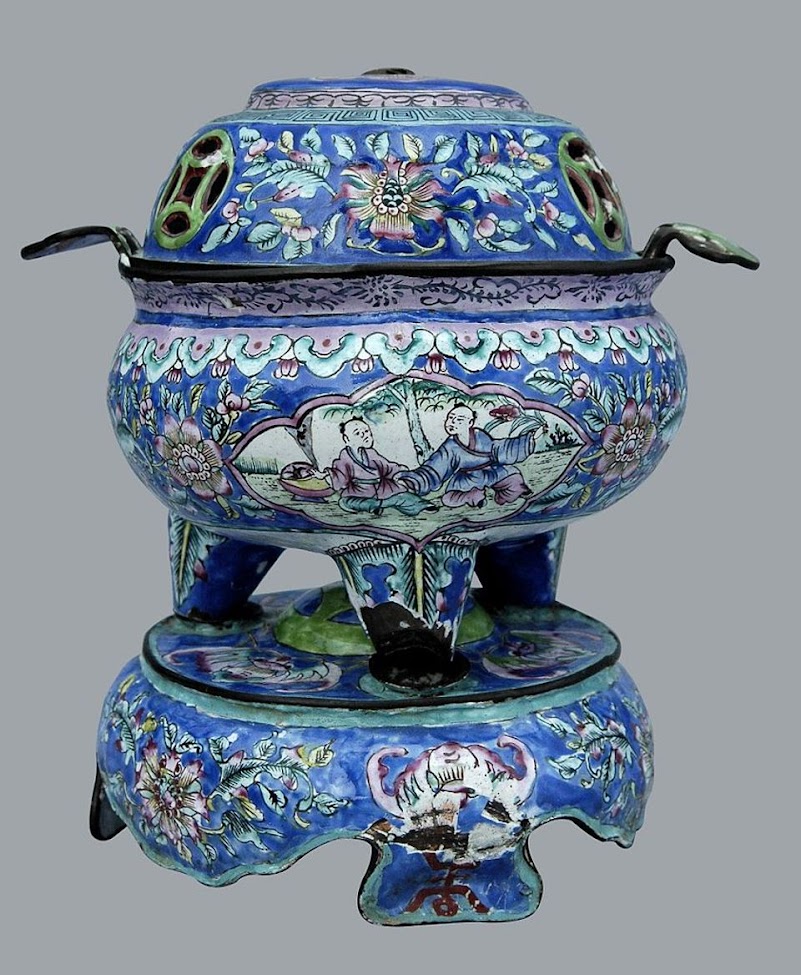Hue Museum Of Royal Antiquities - Place to preserve the ancient culture
Hue is a city with many unique architectural works, with many tombs and tombs bearing the historical mark of the Nguyen emperors. Going to Hue in addition to visiting places like Dai Noi, Khai Dinh tomb, Tu Duc tomb ... you should visit the Hue Museum of Royal Antiquities to be able to admire the artifacts, as well as learn about the royal life of this ancient city.
1. Why Museum of Royal Antiquities is special?
First of all, Hue Royal Antiquities Museum was created
in 1923 and initially called Musée Khai Dinh (Khai Dinh museum), one of the
first museums in Vietnam. The museum is the area where several collections
preserved and of ancient Hue are on screen.
Secondly, most of them are imperial antiquities in ranges of
ceramic, enameled bronze wares, royal attires, imperial seals, musical
instruments utilized in offering ceremonies, glass paintings, red-lacquered,
and gilded and mother-of-pearl inlaid woodwork, etc. Additionally, there is
also a group of Cham sculptures that are unique and diversified. This gives an
overall view about Hue life to tourists.
Thirdly, housed in the An Dinh house, a decorate building of
architectural influence, the Hue Royal Antiquities Museum has
over 300 relics in its own showroom - the household tea collections are
particularly beautiful. The residence was constructed in 1908 by Khai Dinh
emperor and presented to his son, the reigning emperor.
Finally, Long An palace, the main displaying hall of the museum,
is among the most beautiful royal structures of Vietnam today and among the
Complex of Hue Monuments - the World Cultural Heritage inscribed by UNESCO in
1993.
2. What to explore at the Museum of Royal Antiquities?
It is a 7-compartment, 2-bay building assembled in the"double" architecture, originally called the Extended An Palace (Emperor's Security) at the Bao Dinh Residence of Tay Loc precinct. When troops took Bao Dinh Residence to his headquarters in 1885 An Palace was removed and substances were stored. But, in 1909, by order of Emperor Duy Tan, they had been moved to the present-day site (3 Le Truc St.)
It served afterward in 1923, as the Khai Dinh Museum in Emperor
Khai Dinh's time. The building (former Long An Palace) housing the memorial is
a monument of remarkable value. The wooden panels are coated with 35 poems and
essays composed by emperor Thieu Tri.
2.1. Regal game
Hue is the capital of Vietnam under the Nguyen dynasty which is
the accommodation and working place of the emperor and the place where pastime
games took place. The game of the emperor and the elites was very rich at that
time until the time of Bao Dai Emperor appeared more Western-style games.
In particular, Bao Dai and Tu Duc have a very special game and they are very good at this game. In the Hue Museum of Royal Antiquities, there are currently three types of “ Dau Ho” displayed.
2.2. Costumes of emperors of the Nguyen Dynasty
Costumes of the Nguyen emperors also have many types and each has its own name, color, and only wear on specific occasions. These can be divided into groups: royal costumes, traditional royal costumes, ceremonial costumes, and casual wear.
Each group includes shirt, hat, belt, pants, boots, etc, sewing in a specific way, with its own name and different color patterns. Currently in Hue Museum of Fine Arts is still quite full of costumes of the Nguyen Dynasty.
2.3. Ceramic collection
The Pottery Museum display area includes all kinds of pottery:
- Celadon pottery and brown flower pottery of Ly-Tran period (11-14th century).
- Blue pottery in the Le Dynasty (14th-17th centuries),
- Pottery during the Mac Dynasty (16th century),
- Decorative ceramics of the Nguyen Dynasty (19th-early 20th century).
- Chinese ceramics during the Ming-Qing period (14th-early 20th century).
- French ceramics.
- Chinese porcelain: white enamel porcelain painted in the Ming-Qing Dynasty (late 14th-early 20th century) - also called "Thanh Hoa Tu".
2.4. Coin collection
It can be said that Hue royal antiquities museum has a collection of ancient coins arranged according to the unique theme of Vietnam. The theme "Currency circulating in Vietnam from the Northern period to the Nguyen Dynasty" gives visitors and researchers a new perspective on the collection of coins and reflects the life of the Vietnamese people at that time.
3. Hue royal antiquities museum location, opening hours and entrance fee
3.1. Location:
Address: 03 Lê Trực, Thuận Thành street, Huế city, Thừa Thiên Huế province. To visiting hue royal antiquities museum, you can ride a bike, take a cyclo, taxi or drive a scooter with helmets to get there.
Furthermore, if you would like to visit the Museum Of Royal Antiquities along with all of the places like Hue Imperial Citadel; Thien Mu pagoda; Minh Mang Tomb, Khai Dinh Tomb.
You should book Hue City Tour 1 Day, Hue Luxury Group Tour or Hue City Tour By Private Vehicle with English talking captain. Culture Pham Travel makes sure you'll have a great trip in Hue town
3.2. Opening hours: Daily open: from 7:00 am – 5:00 pm.
3.3. Hue Museum of Royal Antiquities entrance fee:
Because it belongs to Hue Citadel, when you come here, you just need to buy an entrance ticket with 150,000 VND / adult, 30,000 VND / child from 7 - 12 years old.

















0 comments